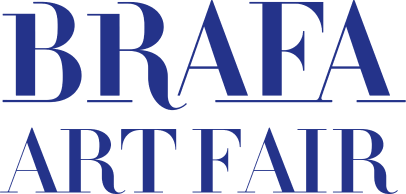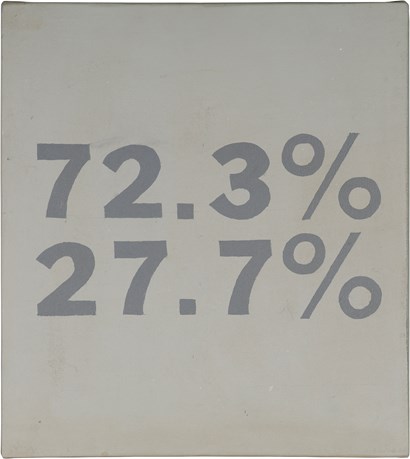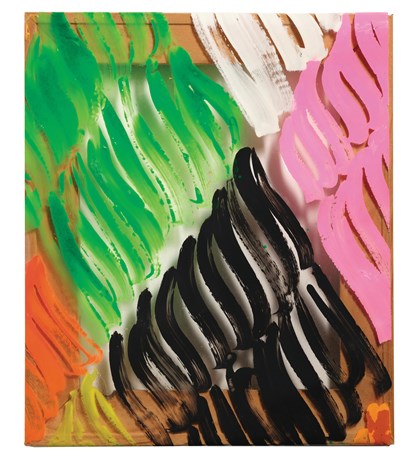This section will be available this Autumn.
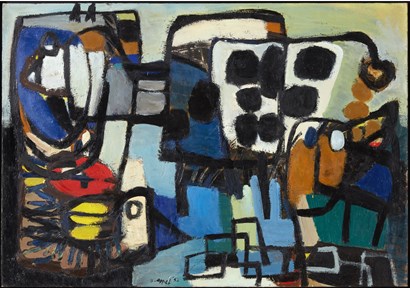
Guy Pieters Gallery
karel appel
Karel Appel (Amsterdam 1921-2006 Zurich) Polderkoe, 1952 Oil on canvas 82 x 116 cm This work is registered in the archives of the Karel Appel estate Provenance: Martha Jackson Gallery, New York; private collection, Belgium; Galerie Krikhaar, Amsterdam; private collection, Brussels
_GeorgesJEANCLOS_T638915587955330883.tif?width=410&height=2000&qlt=90&scale=both&mode=max&format=jpeg)
Galerie Capazza
georges jeanclos
Georges Jeanclos (Paris, 1933-1997) Kamakura, 1991 Terracotta H 30 x W 45 x D 40 cm Provenance: the artist's studio Exhibition: Georges Jeanclos, Élévation, Abbaye Royale de Fontevraud, 25 November 2023-4 March 2024 The Kamakura series was inspired by Georges Jeanclos' trip to Japan, which took him to the country's ancient medieval capital, home to the oldest Japanese Zen gardens. Jeanclos was deeply moved by the beauty and serenity that emanated from these meditative and contemplative landscapes. Upon his return to Paris, these characters were born, sculptures of resilience, ‘monks in meditation, spectators of their inner gardens’ (Tzvetan Todorov). Georges Jeanclos (1933–1997) was one of the great French sculptors of the 20th century. His work was inspired by the traumatic events of the Second World War. To escape the roundups threatening Jews in France, his family had to hide in the woods; he himself, aged around ten, learned to live with the danger of death. In the aftermath of the Liberation, he saw the bodies of former collaborators hanging from lampposts; shortly afterwards, he discovered the skeletal beings who had survived the camps. Decades later, Jeanclos would respond to this formative experience: not by withdrawing into his own experiences, but by opening himself up to the universal, listening to all suffering, past and present; not by depicting horror, but by finding within himself the strength to create beauty. Jeanclos transforms the earth he works with into thin sheets, which he uses to form figures with similar faces, both children and adults, men and women. They are sleepers lying under a sheet of earth; beings enclosed in urns stamped with Hebrew letters taken from prayers for the dead; figures loaded onto boats bound for the other world; kamakuras, meditating monks. Later, he would add Pietàs, Adam and Eve in love, couples brushing against or embracing each other. Jeanclos' images reveal both the insignificance of our person and the indomitable strength of our love; by their mere existence, they help us to live. Tzvetan Todorov

Galerie Florence de Voldère
frederik bouttats l'ancien
Frédérik Bouttats the Elder (Antwerp, 1590-1661) Earthly paradise Oil on canvas 55.5 x 83 cm A painter of landscapes, paradises, and animals, he was also an engraver. He joined the Antwerp Guild as early as 1612. He had two pupils, as well as his sons Frédérik the Younger and Jacob. Founder of a famous family of artists, he contributed, along with his followers, to the influence and richness of Flemish painting through brilliant works under the influence of Velvet Brueghel, Jan van Kessel, and Roelandt Savery. To the great delight of naturalists and humanist scholars, the Breughels and their painter friends such as the Bouttats multiplied the themes of the Earthly Paradise, celebrating the beauty and diversity of creation. Like the Bird Traps, these paradises met with great success, and different versions can now be seen in the world’s greatest museums.
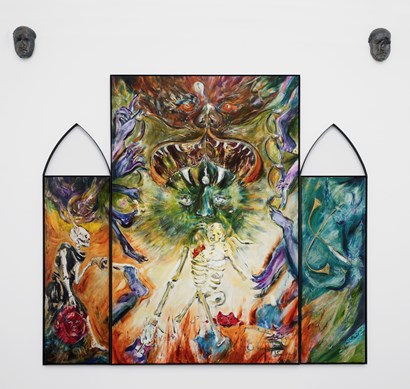
Galerie Nathalie Obadia, Paris/Brussels
joris van de moortel
Joris Van de Moortel (Ghent, 1983) Music enjoys direct access to the soul, has an immediate echo of response since we have music within ourselves, 2025 Oil on linen and artist’s steel frame (3 panels) 200 x 220 cm Provenance: the artist's studio, Belgium Exhibition: Joris Van de Moortel, Le poids du ciel illumine la terre, Galerie Nathalie Obadia, Paris, France, 2025

Barbara Bassi
Arman (Nice 1928-2005 New York) Musical instruments bracelet, circa 1990 Diamonds and 18 kt yellow gold Unique piece signed and dedicated by Arman 'Arman for Janadine' Sonia Delaunay (Ukraine, Hradyz'k 1885-1979 Paris) Flamenco, 1979 Silver metal and enamel Limited edition Provenance: private collection, USA Literature: Cover of catalogue 'Bijoux d'artistes de Calder à Koons' by Diane Venet (Flammarion), Musée d'Art Décoratif, Paris, 2018
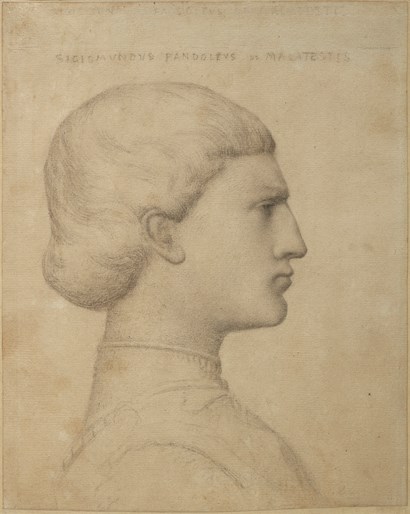
Stéphane Renard Fine Art
jean-auguste-dominique ingres
Jean-Auguste-Dominique Ingres (Montauban 1780-1867 Paris) Sigismondo Pandolfo Malatesta, circa 1814 Graphite and stump on paper 28.2 x 22.7 cm Authenticity confirmed by Mr. Sylvain Bédard after a direct examination Provenance: collection of Jules Cambon (Paris 1845-1935 Vevey) This vigorous graphite and stump drawing testifies to Ingres' interest in medals. Inspired by Pisanello's medal of Sigismund Malatesta, the great condottiere of Rimini, it bears witness to both Ingres' meticulous observation and his capacity for stylization, instilling in this drawing certain characteristic traits that we find in other works by the artist. This drawing may be part of the artist's research during the preparation of Paolo and Francesca, which depicts a scene from the Malatesta court, a painting whose first version was delivered to the Queen of Naples in 1814.
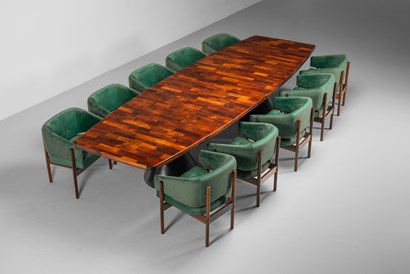
MassModernDesign
jorge zalszupin
Jorge Zalszupin (Warsaw 1922-2020 São Paulo) Guanabara table and Senior chairs, 1960 Rosewood, leather, velvet upholstery H 75 x W 400 x D 130 cm (table) Produced by l'Atelier, Brazil Provenance: private collection, São Paulo Literature: Jorge Zalszupin, Modern Design in Brazil Maria Cecilia Loschiavo dos Santos 2014, pp. 142-143
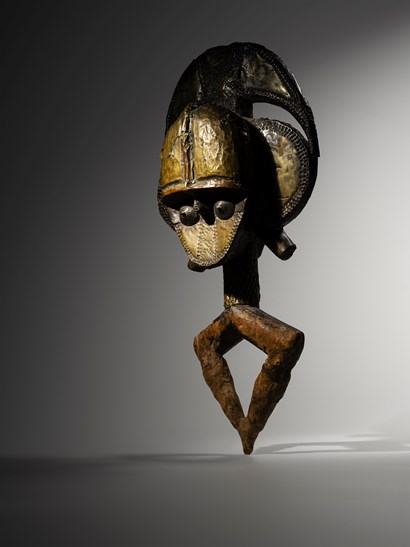
Claes Gallery
Reliquary Figure 'Mbulu-ngulu' Kota Kota-Obamba People Gabon, presumed late 19th-early 20th century Wood, copper and brass H 43 cm Provenance: private collection, Los Angeles, until 1979; private collection, Geneva Literature: L’Art Kota. Les figures de reliquaire, Chaffin, Meudon, 1979, pp. 234-235, fig. 133 (written height: 43.5 cm)
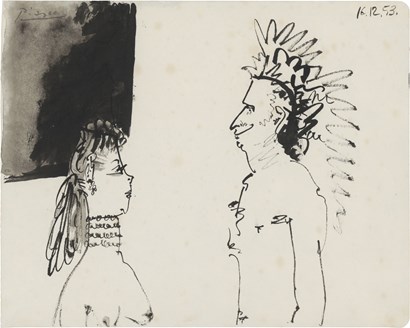
Galerie AB - Agnès Aittouarès
pablo picasso
Pablo Picasso (Malaga 1881-1973 Mougins) Two characters, séduction, 1953 Produced in Cannes on 16 December 1953 Ink on paper 20.9 x 26.4 cm Signed upper left and dated upper right Provenance: Scheffel Gallery, Bad Homburg, Germany; private collection, acquired from the Scheffel Gallery in 1989; private collection; private collection, Paris Literature: Christian Zervos, Pablo Picasso. Œuvres de 1953 à 1955, vol. 16, Paris, 1965, n° 57, p. 20; Dore Ashton, Picasso on Art: A Selection of Views, New York, 1972, p. 125

Galerie Boulakia
jean dubuffet
Jean Dubuffet (Le Havre 1901-1985 Paris) Lampe et Balance 1, 1964 Oil on canvas 97 x 130 cm Signed and dated bottom centre; signed, titled and dated 'juillet 64' on reverse Provenance: Dr. Jacqueline Porret-Forel, Paris (gift from the artist in 1966); collection in the United Arab Emirates; European collection Literature: Max Loreau, Catalogue des travaux de Jean Dubuffet, Fascicule XX: L'Hourloupe I, Paris, 1966, cat. no. 367 (ill. p. 168). Exhibition: Jean Dubuffet, Galerie Georges Moss, Geneva, Nov. 1969-Jan. 1970, cat. n° 8

De Jonckheere
lucas van valckenborch
Lucas van Valckenborch (Leuven 1535/6-1597 Frankfurt am Main) The Kermesse of St. George, 1595 Oil on panel 22.5 x 38.5 cm Signed and dated 1595 LVV on the fountain Provenance: collection of Charles Theodore of Bavaria (1724-1799), Elector of the Palatinate and Bavaria, Munich, inv. n° 138 (according to a label in brown ink on the back dating from 1799, n° 138); collection of Maximilian de Beauharnais, Duke of Leuchtenberg (1835-1852) (fragmentary label); Almas Gallery, Munich, 1941; private collection, South Germany Literature: Pantheon, September 1941, supplement V, repr.; Bernt, Walter, Die niederländischen Maler des 17. Jahrhunderts, Munich, 1948, n° 865 (1960 edition, n° 1216, repr.); Wied, Alexander, Lucas und Marten van Valckenborch. Das Gesamtwerk mit kritischem Oeuvrekatalog, Freren, Luca Verlag, 1990, pp. 176-77, n° 81, repr. Lucas van Valckenborch was undoubtedly introduced to painting by his father Laureys van Valckenborch, before being accepted as a master of the Mechelen painters' guild in 1564. Following the religious persecution inflicted by the Duke of Alba's troops on supporters of the Reformation, he fled the city in 1567 to take refuge in Liège, then in Aachen from 1570 to 1573, where he was reunited with his brother Marten and Hans Vredeman de Vries (1527-1609). He settled temporarily in Antwerp from 1575 to 1577. He was then employed in Brussels by Matthias, the then Governor-General of the Netherlands. In 1581, he accompanied the latter to Austria, staying in Vienna and Prague, as well as in Linz and Nuremberg. As of 1593, he shared his workshop in Frankfurt am Main with his brother Marten; he was granted citizenship on 10 January, 1594, encouraged by Archduke Ernest of Austria (1553-1595). He worked actively in the family workshop until his death in 1597. Considered one of the greatest landscape painters of the 16th century, Lucas van Valckenborch's concept of landscape was derived from Joachim Patinir and Pieter Bruegel the Elder. His very detailed portrayals of the seasons, village kermesses, romantic scenes and townscapes, stand out owing to the meticulous care employed in their execution and the precise structure of the planes leading to the horizon. His panoramic landscapes are a careful observation of the Meuse valley; his anecdotal scenes are painted with the delicacy of a miniaturist, while his landscapes are presented with topographical accuracy. At the end of his life, his deep landscapes with their luminous, refined nuances, bear witness to a creative approach that sought to go beyond the Bruegelian concept, which was never surpassed by his contemporaries.

Hartford Fine Art - Lampronti Gallery
Giovanni Antonio Canal, also called Canaletto (Venice, 1697-1768) Capriccio of Piazza San Marco from the Basin of San Marco with the Church of the Redeemer Oil on canvas 130 x 105 cm Written expertise by A. Morassi and by R. Pallucchini Provenance: Mrs. Van der Gucht collection; Christie’s sale, catalogue n° 78, November 1965; Fogg collection, acquired from the above sale; Sotheby’s sale, catalogue n° 110A, March 1968; Johnson collection, acquired from the above sale; Sotheby’s sale, catalogue n° 70, June 1970; Harlow collection, acquired from the above sale Literature: W. G. Constable, Canaletto, second edition, ed. J. G. Links, Volume II, n° 459, p. 438, pl. 208
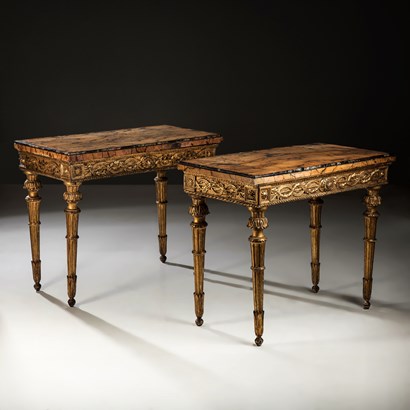
Vagabond Antiques
Pair of Roman console tables Roman Neoclassical period, circa 1770 Veneer, Sienna marble, Breccia Africana marble H 90 x W 112 x D 56 cm Provenance: previously in the collection of Cardinal Vincenzo Vannutelli (1836-1930), Dean of the College of Cardinals; thence by descent; collection of the fashion designer Stefano Gabbana Each with a rectangular top butterfly veneer in richly figured Siena marble, edged in a contrasting band of Breccia Africana marble. The frieze is crisply carved with classical laurel swags, centres by rosettes and anthemion motifs and set against a punched ground to catch the light. The square corner blocks are decorated with stylised sunflowers. The tapering fluted legs are carved in three sections, with boldly gadrooned collars and stiff-leaf details above toupie feet. The carving is of sharp quality throughout, with well-preserved original gilding enhancing the architectural lines of the design.
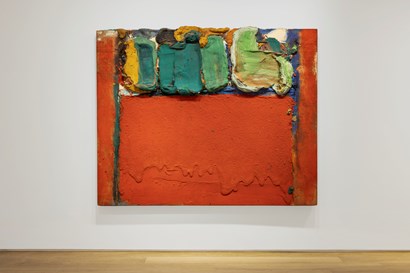
Samuel Vanhoegaerden Gallery
Bram Bogart (Delft 1921-2012 Sint Truiden) Topgroen, August 1963 Mixed media on canvas laid on wooden panel 161 x 201 cm Signed, dated and titled on reverse Provenance: private collection, London In August 1963, Bram Bogart created a powerful and iconic work: Topgroen (August 1963). The painting – executed with homemade paint on a board/canvas made by the artist himself – measures approximately 161 x 201 cm and testifies to Bogart's radically innovative approach to matter and colour. The work Topgroen is at the heart of Bogart's most highly regarded period, in which he experimented with imposing layers of paint, sculptural reliefs and a colour palette that transcends the surface and becomes almost tangible. In this work, he combines powerful fields of colour with monumental texture: an intense red surface is directly framed by thick, almost architecturally shaped green and yellow accents. The paint is hardly imagination anymore, but matter – as if the paint itself is the object. Topgroen marks a turning point in Bogart's oeuvre: colour and volume become one, the painting resists classical painting through an enormous physical presence of the matter. The work invites tactile viewing: the depth of the paint layers, the shadow effects between reliefs, and the tension between surface and volume make it a masterpiece of material painting. Bogart thus confirms his pioneering role in European post-war abstraction.
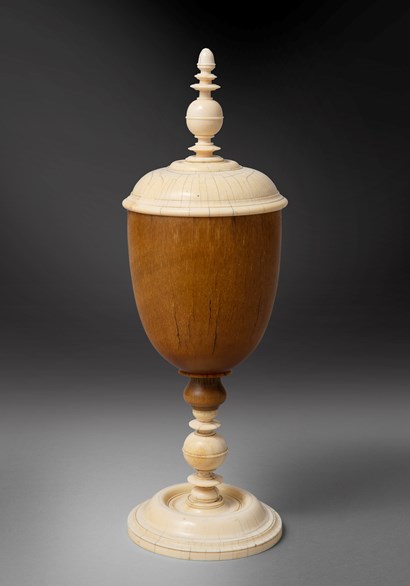
Finch & Co
Turned standing cup and cover on knopped foot Germany, late Renaissance, first half 17th century Rhinoceros horn and ivory, old smooth patina, age cracks to foot H 33 cm - Ø 11 cm Belgium CITES: 2025/BE01678/CE Provenance: Finch and Co, item n° 77, catalogue n° 20, summer 2013; private collection Comparative literature: a cup and cover of similar shape engraved with the inscription ‘the exalted Roman Emperor Rudolf II’s goblet which protects against poison – the unconquerable Emperor’s hand shaped this ingenious goblet’ D 406.766 / 339 Royal Danish Kunstkammer, Copenhagen, National Museum A fine and large late Renaissance turned standing cup and cover on knopped foot of impressive size The Milanese master instructor of turning Giovanni Ambrogio Maggiore visited Bavaria on various occasions between 1574 and 1593 to teach the Duke Wilhelm this newly invented form of art, creating marvellous objects from natural substances. Maggiore also trained the artist Georg Wecker who went on to become Dresden’s ‘court turner for life’ to the elector Augustus of Saxony in 1578. Regarded at the time as a form of advanced mechanical technology, the art of turning in ivory, ebony and rhinoceros horn became a princely pastime for ‘Drechselnder souverän’. Rhinoceros horn objects were regarded as items of great rarity and prestige in Renaissance Europe, but they had been seen as objects of great value with inherent magical properties for well over one thousand years before this time in China, and by the early 17th century Chinese cups and vessels of carved rhino horn were being exported to Europe to meet the demand for exotic curiosities for the cabinets of wealthy collectors.

Francis Janssens van der Maelen
Saint Cosmas bust in gold, rock crystal, skull Flamboyant Gothic, in the style of Viollet-le-Duc, circa 1845–1870 H. 27 × W. 20 × D. 8 cm Weight: 1.468 g Provenance: private collection Solid gold reliquary bust in 22-carat yellow gold with a movable headdress opening onto a rock crystal cabochon magnifying glass covering fragments of cranial calvaria. Work in the Flamboyant Gothic style (Viollet-le-Duc), set with quartz and garnet cabochons. On the front, a cartouche bears a Latin inscription engraved on two lines: “Sanctus Cosmas Ora pro nobis” (“Saint Cosmas, pray for us”), surmounted by an oval rock crystal cabochon surrounded by eight alternating quartz and garnet cabochons. The piece is unhallmarked, which is not unusual for a reliquary. Beneath the base, an old label bears the handwritten inscription in ink: “No. 1”.

Galerie Berès
Georges Lemmen (Brussels, 1865-1916) Vue sur l'église de Dadizele, circa 1891 Oil on panel 16 x 24 cm Monogram lower right GL This work will be included in the forthcoming catalogue raisonné being prepared by Olivier Bertrand Literature: Roger Cardon, Georges Lemmen 1865-1916, Brussels, 1997, 40 p. 104

Repetto Gallery
valerio adami
Valerio Adami (Bologna, 1935) La firma del muro antico, Odisseo (per E. Pound), 1977 Acrylic on canvas 204 x 152 cm Signed, dated and titled on the reverse: Adami 8.8.77 17.11.77 La firma del muro antico. Odisseo (per E. Pound) Label on the reverse by Galerie Rive Gauche Marcel Strouk, Paris Certificate of authenticity by Archivio Valerio Adami n° 878 Provenance: Galerie Maeght, Paris; private collection, France (acquired from the above) Exhibition: Valerio Adami, 7 October-12 November 1978, Palais des Beaux-Arts, Charleroi; Valerio Adami. Ripensando la realtà, Dep Art Gallery, Milan, 6 March-17 May 2025
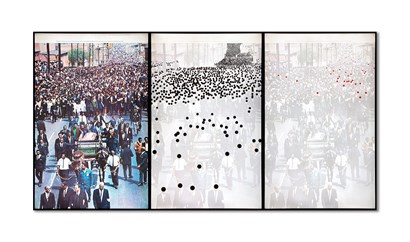
Galerie La Patinoire Royale Bach
alfredo jaar
Alfredo Jaar (Chili, Santiago 1956) Life Magazine, 19 April 1968 1995 Three lightboxes, analog C-print on Duratrans 183 x 360 cm (entire dimension) 183 x 120 cm (one lightbox) Unique piece Life Magazine, 19 April 1968 (1995) by Alfredo Jaar is one of the Chilean artist’s iconic lightbox works in which he pointillistically engages an image from the public archive, intervening with his signature cutting precision to highlight social inequities and the politics of image making. The source image for this work is a documentary photograph of Martin Luther King’s funeral printed in 1968 in Life Magazine, the magazine of reference for a generation of Americans. In the image, a horse drawn casket is surrounded by supporters, and behind, a crowd fills the boulevard, stretching into the vanishing point beyond. It is a powerful representation of the late civil rights leader’s influence. The source photograph is presented large scale on the left third of the lightbox. In the center, the image is whited over, and in the place of faces in the crowd are black dots, massing and overflowing the street. In the rightmost part of the triptych, the source image is similarly whited out, but this time only a smattering of red dots appear — a handful scattered across the crowd. The artist placed black dots on the faces of African Americans. The red dots highlight White attendees. Created while Jaar was researching the Life archives for another iconic lightbox work, Searching for Africa in Life (1996), in which the artist reprints every cover of the magazine, highlighting through the punctum of the title the glaring absence of adequate representation of the continent, Life Magazine, 19 April 1968 (1995) similarly makes manifest a glaring absence. Through the precision of the artist’s intervention, and rendered in the artist’s signature clean lines, a singular gesture evokes the imbroglia of lingering racism and inequality in contemporary society.

